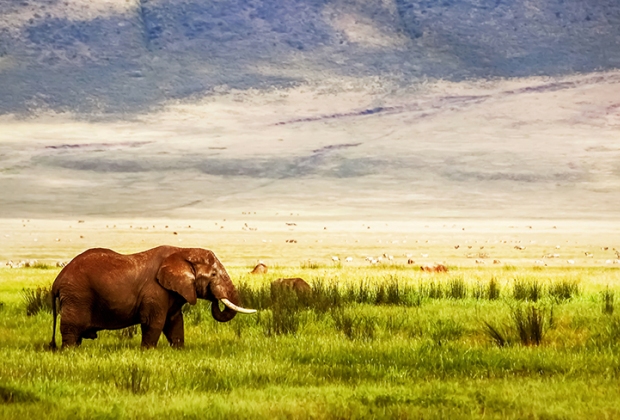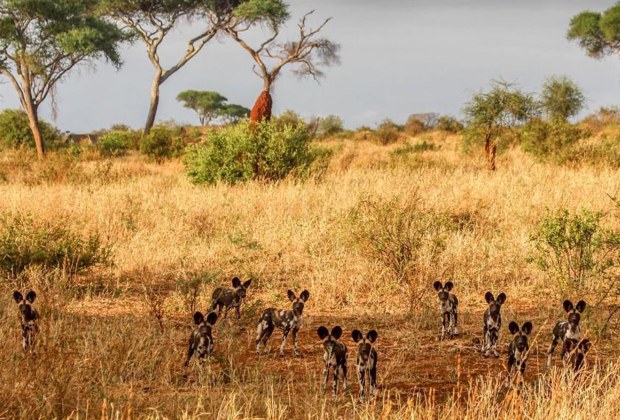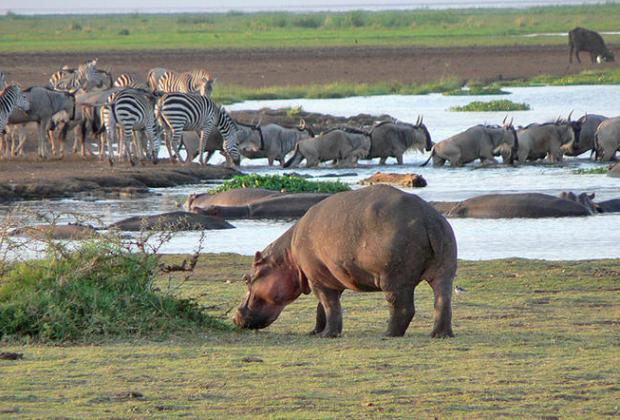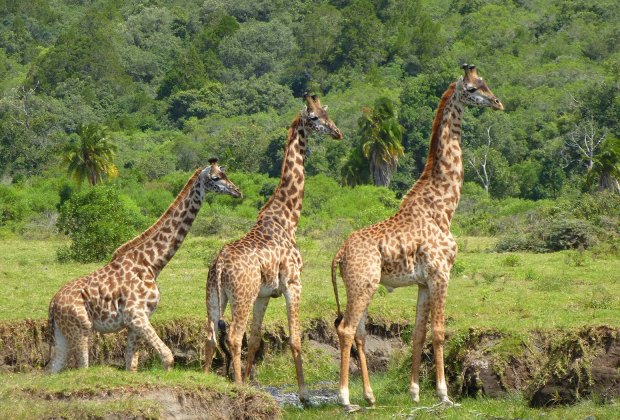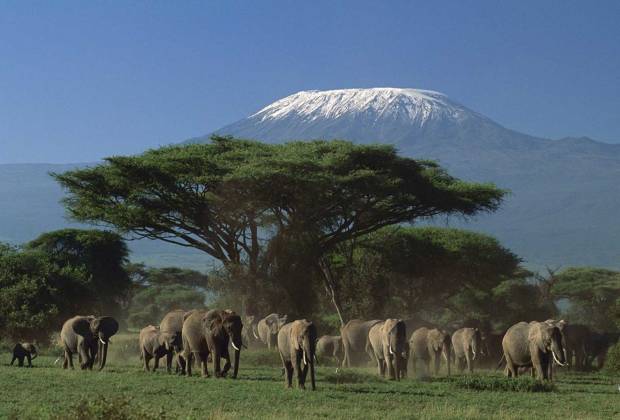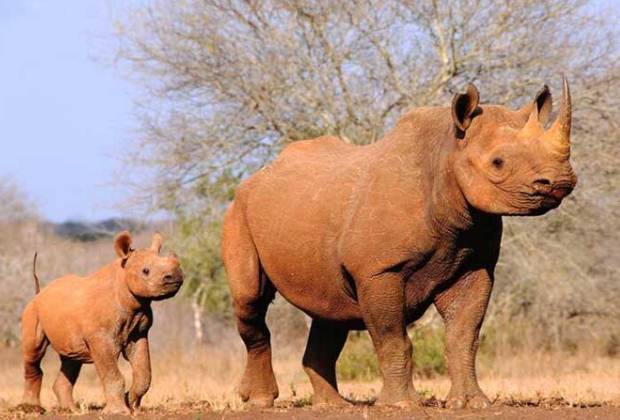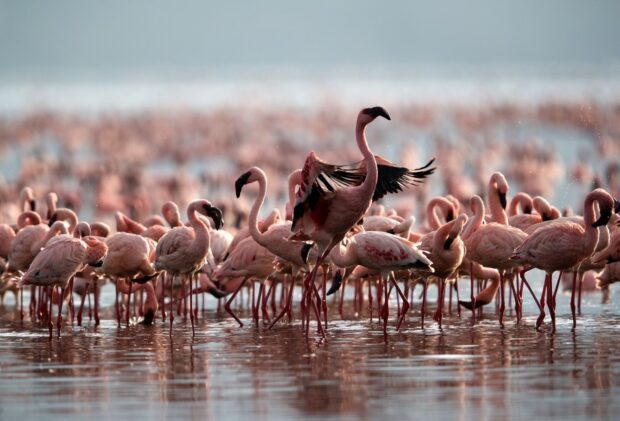The Northern Safari Parks Circuit of northeast Tanzania covers an area that is stupefyingly rich in natural features, wildlife, and historical association, from the snows of Kilimanjaro and the fires of Ol Doinyo Lengai to the hominid excavations at Olduvai Gorge, part of the Ngorongoro and Serengeti ecology to the fishing waters of Lake Victoria leading up to Rubondo Island. The southern plains of west Kilimanjaro are part of the elephant movement corridor from Kenya’s Amboseli National Park in search of fresh foliage and greater water availability from the glacier streams of the highest mountain in Africa. It is a little-known multi-use area, home to diverse herbivores from wildebeests, zebras, giraffes, elands, buffalos, and other ungulates, as well as the cattle of Maasai pastoralists who are embracing the eco-friendly African cultural travel industry while helping to conserve and live in mutual harmony. Mount Kilimanjaro National Park also offers access to the harder and more splendid routes to climb the majestic snow-capped mountain, which rears its lone head to 5895 meters, the highest stand-alone mountain in the world. Arusha National Park contains a fascinating diversity of habitats, which are surprisingly neglected by visitors on a well-rounded tour in Tanzania with Kiwoito Africa Safaris. The montane forest shelters playful black and white Colobus monkeys and encloses steep walls of the Ngurdoto Crater with its marsh floor. The beautiful green and blue Momella Lakes are ideal for canoeing, teeming with pink flamingos while lyre-horned waterbuck, butt circle waterbuck, elegant giraffe, and agile dik-diks roam the shores and plains. There are few elephants and no lions here, but hyenas and leopards have been spotted infrequently. Central Mount Meru is a smaller version of Kilimanjaro, which can be seen to advantage from slopes where the glorious tropical forest gives way to heathland studded with giant lobelia and carpeted with white everlasting daisies.
Tarangire, in the northern ecosystem, is the site of a spectacular dry season elephant migration as mobs of behemoths dig up dry river beds in search of underground water, attended by thirsty buffalo, impala, eland, and gazelle with hundreds of thousands of migratory hoofed and horned relatives, all prey to numerous predators, including tree-climbing lions and pythons. Rare straight-necked gerenuk and patch-faced oryx roam the dry grassland. An avian expedition of Tarangire in the wet is a birdwatcher’s dream, with the world’s largest number of breeding species. From here, like-minded Kiwoito Africa Safaris guests can visit Barabaig and Maasai communities or view the stone paintings at Kolo Rocks in the Kondoa highlands caves. Gorgeous alkaline Lake Manyara gleams for 50 kilometers, colored by a pink fringe of flamingos, below 500-meter golden cliffs of the Great African Rift Valley escarpment. An extensive Manyara nature tour through grassy floodplains reveals old tusker elephants and tree-climbing lions as you head for steaming volcanic springs at the south end of the soda lake. A highland trip to the unbroken caldera of Ngorongoro Crater, which forms a protective rim to grassland, swamps, and central Lake Magadi, reveals habitats for dense concentrations of wildlife, including extremely rare black rhinos and pride of inbred lions. Lake Natron is the most alkaline of the Rift Valley lakes, which makes it perfect for more than two million lesser flamingos to build mud platform nests, protected from predators by toxic waters bright red with phytoplankton, which feeds the flamingos and provides their deep pink-red hues.
The prime Serengeti plains spread all the way to the north onto Kenya’s Masai Mara, the prime scene of the epic gnu migration. Predators such as lions, hyenas, cheetahs, and leopards trail the thirsty hordes covering the plains while giant crocodiles wait at hazardous Mara and Grumeti Rivers crossings. In between Serengeti and Ngorongoro is where prehistoric man’s tracks, bones, and tools revealed in over three million-year-old rocks at Olduvai Gorge and Laetoli began his ascent to civilization. The plains have been home to successive tribes, of whom the Maasai are the last to arrive and claim the area as their homeland, where they are now heading the sustainable integration of human settlements with wildlife conservation and ecotourism. On a Tanzanian aquatic holiday off the shores of Lake Victoria, delightful beaches hold fascinating anthropological sites. Visit Rubondo Island National Park or the formerly gazetted island wildlife sanctuary, the tiny new Saanane Island National Park. The area is a major breeding ground for Tilapia, Nile perch, and other fish species, as well as migratory birds, hippos, and crocodiles, and is especially known for its African fish eagles and papyrus swamps. After spending the dry, cool season in the north, uncountable herds of wildebeest return to calve on the southern Ndutu plains, synchronously dropping over a three-week period, a half a million joyous bundles of new life to outface ever-hungry predators and ensure the survival of a new generation. It is impossible to take in the amazing scenic diversity of the Northern Safari Circuit in one visit, but a Tarangire or Serengeti balloon safari could give you a good overview. Whatever you want to see on your safari vacation in northern Tanzania, Kiwoito Africa Safari can arrange a seamless and flawless customized itinerary that is especially for you.


